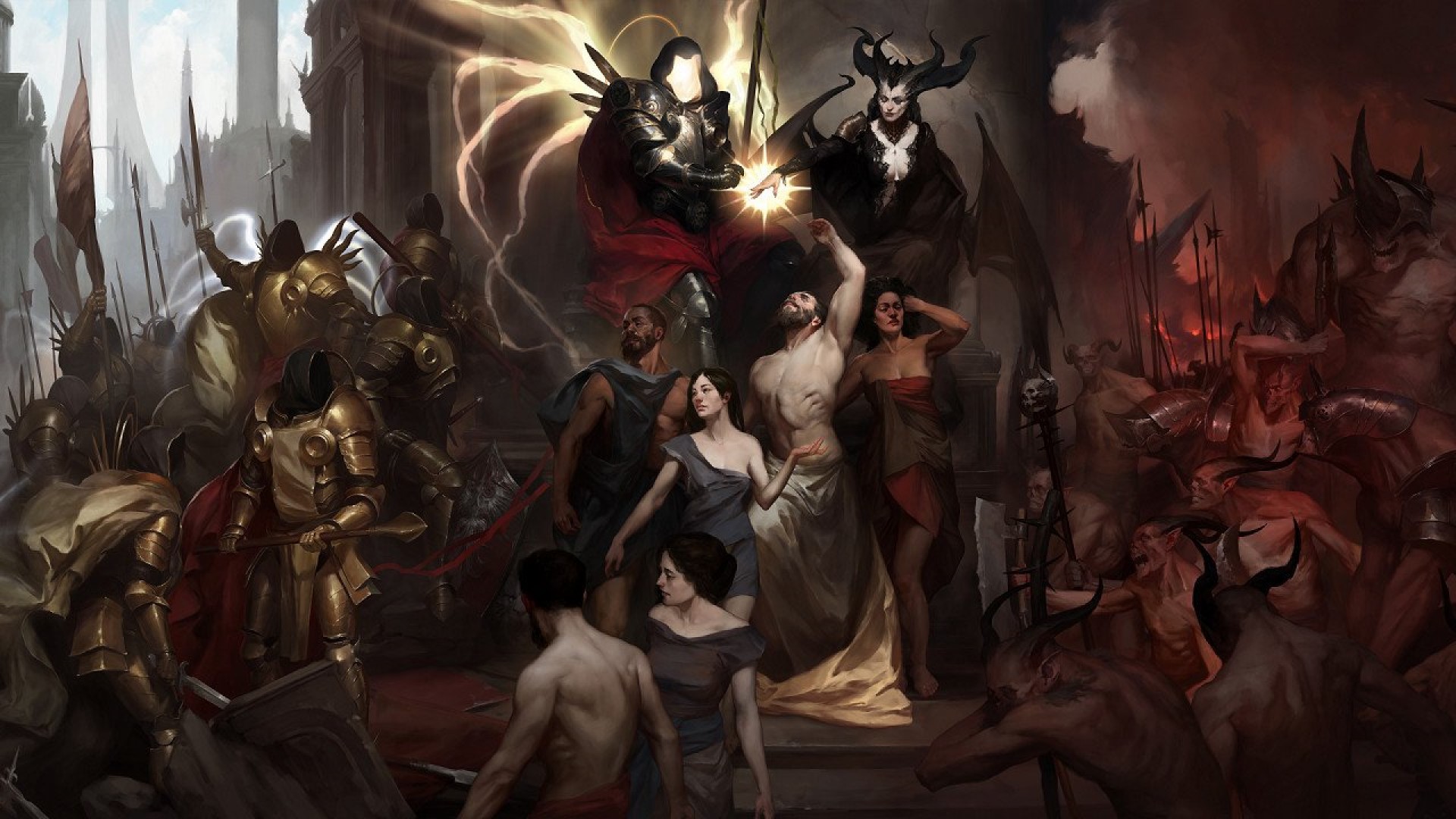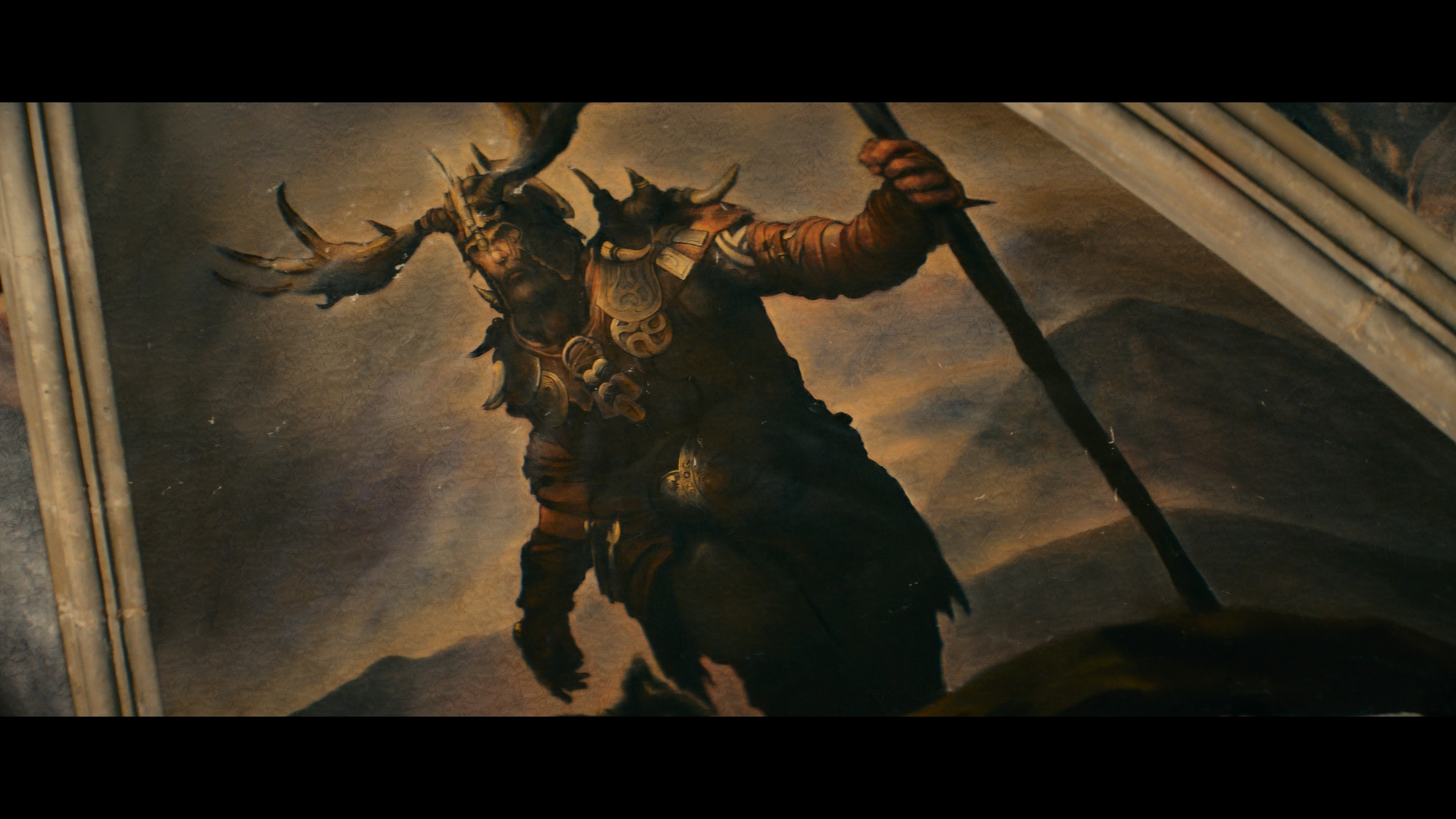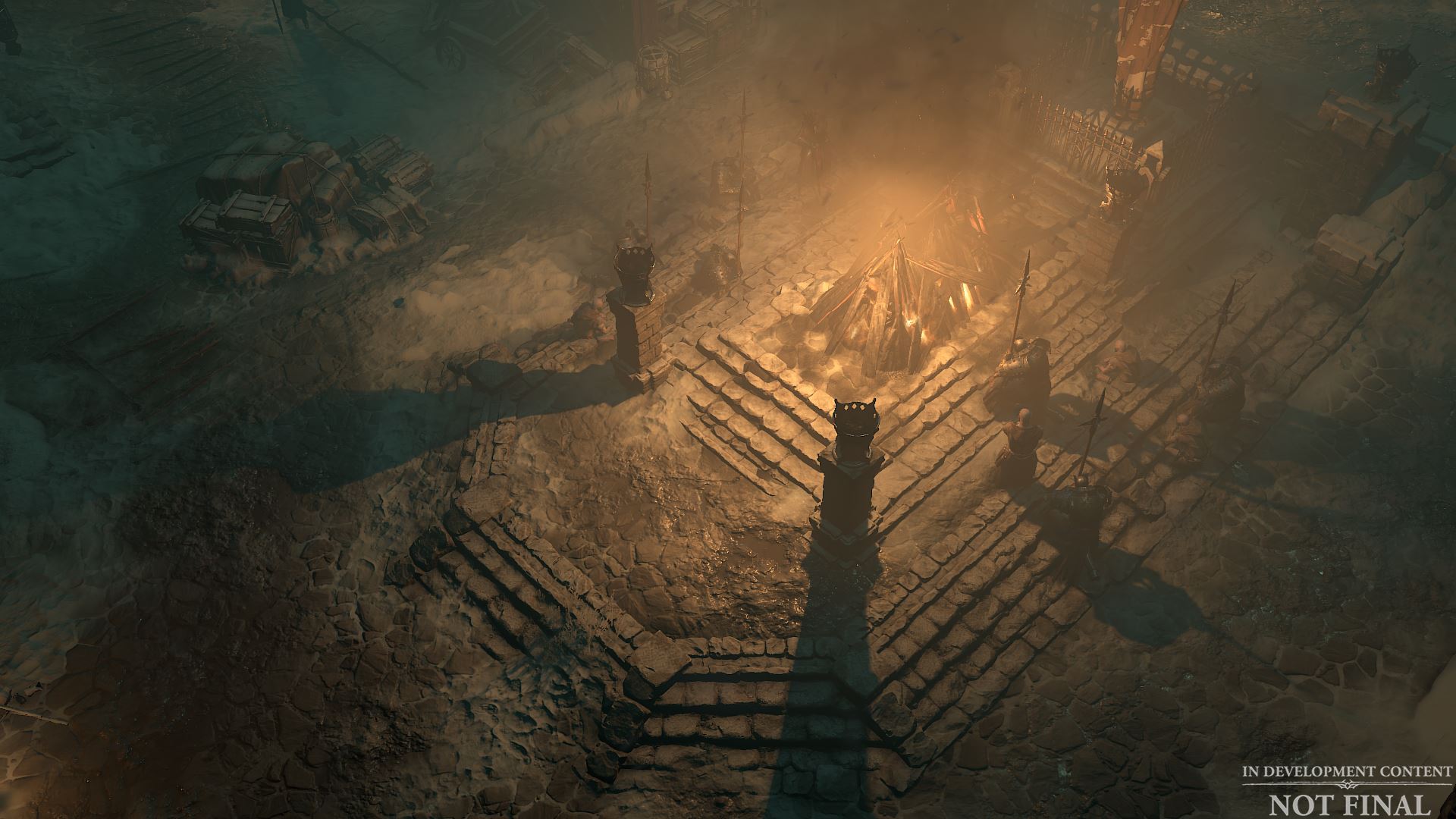Diablo 4 feels “like a painting” thanks to its classical influences
The devil is in the details

You only need to glance at Diablo 4 to see that the upcoming action RPG harks back to the dark, yet eerily majestic feel of Europe’s medieval period. Towering gothic structures, dark, foreboding dungeons, and blasted wastelands are par for the course in Blizzard’s latest offering.
However, there’s more to Diablo 4’s aesthetic sensibilities than meets the eye. After sitting down with art director John Meuller and voice actor Joseph Balderrama, it became clear to me that the title’s artistic pedigree is deeply rooted in real-world artistic history. From Shakespeare to Carravagio, Diablo 4’s sights and sounds are built on profoundly solid foundations.
According to Meuller, Diablo 4’s art style is built on “several pillars”. Although the team was keen on one of these pillars being a “return to darkness”, paying homage to the series' legacy, the art director was keen to consider the idea of “a future Diablo” when crafting the title. After all, if Diablo 4 is to join the ranks of the best RPGs out there, it’ll need to meaningfully iterate on the formula.
This led Meuller and his colleagues towards a second major source of inspiration: “the Old Masters pillar.” In the art world, “The Old Masters” refers to any painter of great talent who worked in Europe before about 1800. These figures were responsible for capturing and reimagining the medieval and early-modern periods of European history with their canvasses and brushes, channeling medieval and gothic influences with a deft flair.
Iconic medieval and early-modern artists were a “jump off point” for Meuller and his team
Old Masters, like Rembrandt and Leonardo da Vinci, were renowned for their ability to blend light and shadow, a technique artists call ‘chiaroscuro’ – something that Meuller and his team have tried to bake into every aspect of Diablo 4. As Meuller puts it, the “roots of Diablo [are based in] angels and demons, with humankind caught in the middle [of their battle], being tortured by these two forces.”
These great medieval and early-modern artists were a “jump off point” for Meuller and his team. “We looked at the landscapes, and we looked at [these] old paintings, [but] the main thing was to get the art to feel the way that it does… through the tools and technology of where we’re at today.” Diablo 4 takes these deeply rooted ideas from art history and drags them into a modern context, offering a refreshing, yet deeply bleak art style.
The world’s a stage

All of these factors feed into what voice actor Joseph Balderrama calls the “hyperreality” of Diablo 4’s setting. Balderrama joins Diablo 4’s ensemble as the voice of the male sorcerer, one of the game’s five classes. With credits ranging from open-world action game Horizon: Forbidden West to great tactical RPGs like Triangle Strategy, Balderrama was keen to emphasize how being “classically trained… serves video game actors, particularly in fantasy games with a sense of history about them.”
Sign up for breaking news, reviews, opinion, top tech deals, and more.
“It serves you very well in terms of accessing something that is heightened and yet truthful.” When recording his lines for the male sorcerer, Belderrama reveled in the scale and depth of Diablo 4’s world. “Everything is more,” he says, “and yet, the way [Blizzard] like to record the sound is quite intimate, unlike a lot of [other] games.” For Belderrama, it’s about “maintaining a level of intensity” without using “volume” or “being physical” as a crutch.
Belderrama reveled in the scale and depth of Diablo 4’s world
The contrast between the heightened and the truthful speaks to the broad extent to which ‘chiaroscuro’ runs through every aspect of Diablo 4. The sorcerer, for example, is “otherworldly”, forced into “exhilarating” circumstances, whilst also maintaining “an unflappable sort of groundedness.”
Not only did this contrast heighten the dramatic moments of Baldarrama’s reads, but it also “provided moments of comedy”, too. It’s this sense of contrasts that gives Diablo 4 its unique artistic identity which, in Balderrama’s view, gives the game and its characters a distinct “allure”.
In a glass darkly

It’s all well and good to talk about high-minded artistic elements, but how do these techniques look like in practice? Meuller stressed the “collaboration between art and design” that went into building and “artifying” the open-world.
Meuller used the example of the Fractured Peaks, one of the earlier zones in the game. “There’s parts of [the zone] to the north that are very glacial… it’s cold and everything’s frozen. Then you go to the south and it starts to melt off and you start to get… mud, slush and stuff like that.” Again, Diablo 4’s design comes back to subtle, yet ever-present contrasts.
Diablo 4 is intended to offer so much more than a sense of bland grim darkness
However, these contrasts always exist within a coherent overarching context. “All that runoff from the mountains” influences the lands to the south, where players will find themselves “going by waterfalls” and other geographic features that exist only because of what’s going on in the Fractured Peaks. “You have this connected story [full of] visual storytelling about the geography of the world – it really makes the experience engaging and immersive.”
Meuller and his team seem intent on creating a title that, while grounded and earthy, is also bursting with artistic contrasts, using juxtaposing visual cues to create a sense of immersion that’s simultaneously eerie and compelling. Diablo 4 is intended to offer so much more than a sense of bland grim darkness. By channeling classical influences and applying them to the game’s world, the Diablo 4 team is delivering a meticulously curated world that oozes with medieval grandeur and disquieting gothicana.

An editor and freelance journalist, Cat Bussell has been writing about video games for more than four years and, frankly, she’s developed a taste for it. As seen on TechRadar, Technopedia, The Gamer, Wargamer, and SUPERJUMP, Cat’s reviews, features, and guides are lovingly curated for your reading pleasure.
A Cambridge graduate, recovering bartender, and Cloud Strife enjoyer, Cat’s foremost mission is to bring you the best coverage she can, whether that’s through helpful guides, even-handed reviews, or thought-provoking features. She’s interviewed indie darlings, triple-A greats, and legendary voice actors, all to help you get closer to the action. When she’s not writing, Cat can be found sticking her neck into a fresh RPG or running yet another Dungeons & Dragons game.